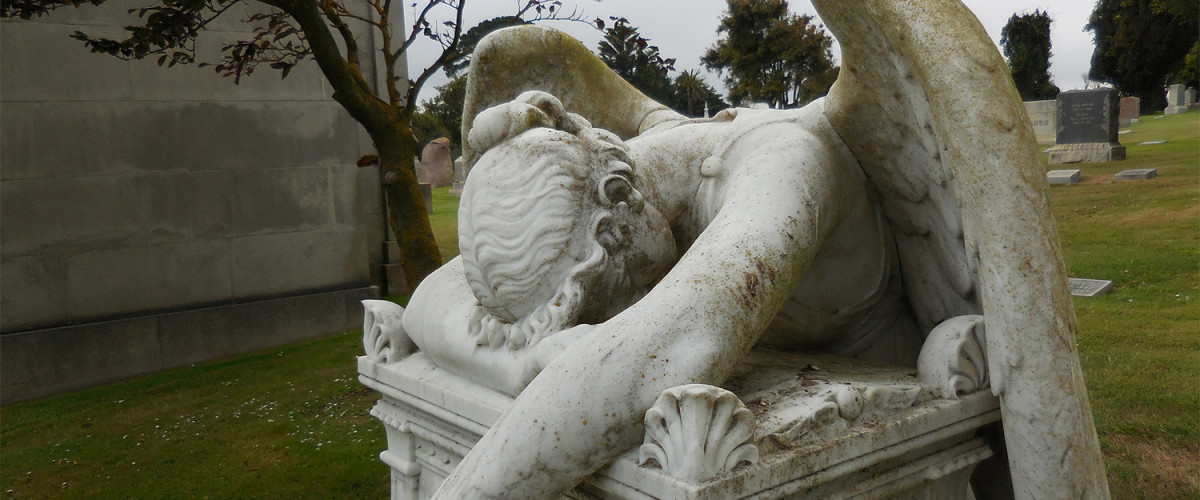During the summer of my Clinical Pastoral Education residency at Children’s Healthcare of Atlanta, all eight of us in the cohort experienced many deaths and sleepless on-call shifts. One day during education, we were noticeably and collectively “out of it.” Our supervisor, Martha, made a plan for us to gather at her home on the lake for a day of rest and silent retreat.
When we arrived, we ate breakfast together — coffee and bread from Martha’s sweet sourdough starter. Then we engaged in a brief time of fellowship as we prepared to spend the day in silence.
Martha gave us the lay of the land and told us we could do anything that day, as long as it was restful. She mentioned the guest room upstairs, if anyone wanted to sleep; plenty of space by the lake; trees to sit under; comfy sofas in the living room. Then she dismissed us to rest and restore.
I sat in the swing under a dogwood tree still adorned with beautiful white blooms. I journaled for a while, cataloging entries by category in my master journal. (I know; nerd alert.) Then, I stretched out on the swing under the brilliant, blue sky. I admired the canopy of flowers above me for several moments before I let my heavy eyelids drop closed and my mind drifted off to sleep.
When I awoke, I had slept two hours, and it was time for lunch. Late that afternoon, we described what the time had been like for us before Martha released us to enjoy the lake a little more or to head on home. I remember vividly both the day of restoration and the events leading up to that visible display of utter exhaustion from each of the residents.
Previously we discussed compassion fatigue, vicarious trauma and secondary traumatic stress. We received tools and assessments for self-awareness. I participated in a lot of individual supervision conversations about secondary traumatic stress after supporting a family whose child had been in an accident similar to the one I fortunately walked away from with two broken ribs and a bruised tailbone. This family’s story would play out much differently.
Witnessing many situations leading to the death of a child or other traumatic life changes had changed us. At that point, we had been carrying the weight of those families’ heartbreaks mingled with our own existential fears for almost a whole year. And it was quite a heavy load.
Heaviness is known by a few names. Exhaustion, compassion fatigue, listlessness, burnout … grief.
Heaviness is known by a few names. Exhaustion, compassion fatigue, listlessness, burnout. Recent events in the world and in my work have provided ample opportunities to consider the heaviness we carry with us — particularly the unique heaviness known to leaders in ministry contexts, which we so often call burnout.
But what if we’re not burning out? Maybe our compassion muscles are fatigued because we are, and have been, grieving for the better part of two years.
When I read the State of Women in Baptist Life report, I was struck by the statistic that 72% of women in ministerial positions experienced burnout as a direct result of the COVID-19 pandemic.
I wasn’t surprised, but seeing this information on paper as part of an official report feels so imposing and acute. The percentage validated in writing carries with it a gravitas missing when it’s just talked about or assumed. I knew through our connections on social media that my minister friends were struggling. It was striking to see how much.
Looking back to March of 2020, I remember preparing for a two-week COVID lockdown, when we fully expected to be back in the office after a short period working from home. I grabbed my church directories for pastoral phone calls, books I would need, plus a few other essentials and set up a home office in our living room.
But week by week, it became more and more evident we weren’t going to come to the office again any time soon. It made me sad, because my work office was a very cozy place to work, with no cat interrupting me every few minutes to walk on my computer! Sadder still, I realized in-person worship and even our ministry of Church at Home with our elders, who had not been able to gather with us at worship for quite some time, would be postponed indefinitely.
When “indefinitely” stretched out its greedy fingers to envelop Easter Sunday, then Pentecost Sunday — my favorite day of the church year — my sadness morphed into a palpable unease compounded by deep exhaustion. At the time, I figured this stress stemmed from the change in how I conducted my pastoral care, plus worry over this virulent virus that was taking the world by storm.
What is the church to make of the grief buried deep in the bodies of women, many of whom we entrust with the care of congregants and the community? What are we to make of our own grief, speaking to us in ways we may not recognize but certainly feel?
After a career change due to an opportunity for my husband, and after working for nearly the past two years as a bereavement program coordinator in a North Carolina health system, I can identify what I experienced in 2020 as lockdown began and my pastoral care shifted to phone and video chat and what I experienced from death after death in my residency: Grief. What I experienced in the past two years while compiling monthly tallies of system deaths and leading my grief support groups for six weeks at a time: Also grief.
Women in ministerial leadership positions often carry multiple griefs, as documented in the State of Women in Baptist Life report.
Prompted by exhaustion over fighting for a seat at the table, navigating inappropriate questions about dating life or family planning, being overlooked or silenced in ministry settings, dealing with discrepancies in pay for similar work, having expertise questioned, or needing to prove their competencies at a higher rate than their male counterparts, women in Baptist life are grieving, often deeply. The COVID-19 pandemic and the misuse of power in ministry settings that lead to sexual harassment and abuse complicate and exacerbate these griefs.
What is the church to make of the grief buried deep in the bodies of women, many of whom we entrust with the care of congregants and the community? What are we to make of our own grief, speaking to us in ways we may not recognize but certainly feel?
One of my colleagues in the spiritual care department at work entered the conference room one day while I was eating lunch. “Ms. Grief, I have a question for you,” she said. I wasn’t offended. In fact, I liked the nickname. It felt like an endearing affirmation that I am good at my work.
My work, as I understand it, is not only to support grieving families and friends of loved ones who have died, but also to facilitate lament and mourning. Lament and mourning are essential, uncomfortable and often painful parts of grief. They move us through the mire of tender emotions and tangled feelings toward hope.
Hope always is a welcome companion on the journey of grief. But it’s not a final destination in and of itself, because grief never ends. Grief ebbs and flows as we go about our lives. And in the process, we can catch glimmers of hope.
It’s vital not to rush the process. In the movie The Hours, Leonard Woolf asks his wife, Virginia, why someone must die in her book. She answers, “Someone has to die in order that the rest of us should value life more.”
The finality of life allows us to appreciate it, to fully live it, to embrace it in all its messy and beautiful humanity. The church must bear witness to the grief of women, lay and ordained alike, in order that we might know how to value them more. This means sitting in the essential, uncomfortable, often painful realities they share with us.
While there are glimpses of hope — like a young girl seeing a woman preach from the pulpit and knowing she can, too, if she wants — we have seen glimpses of griefs that are painful to carry and too heavy to shoulder alone.
As we learn to value, trust, embrace and believe women in ministry, let’s make some room on our shoulders to help with their burdens and space at our coffee tables to listen to their hurts — even as we create opportunities to dream a better way forward through glimpses of hope.
Sara Robb-Scott serves as bereavement program coordinator at WakeMed Health and Hospitals. Sara and her husband, Andrew, live in Durham, N.C., with their cat, Reesee, and two Guinea pigs, Hillary and Elizabeth. Sara blogs at www.sarainrealife.com
Related articles:
Annual report on Baptist women in ministry finds some gains but serious losses due to COVID
Women in ministry face daily slights that add up, BWIM leaders explain
Who’ll bring the sackcloth and ashes to CBF General Assembly this week?


